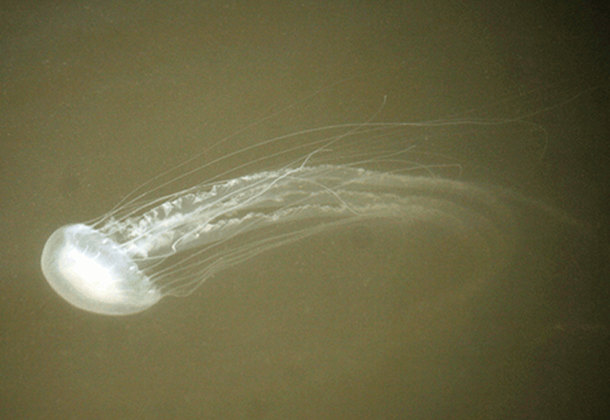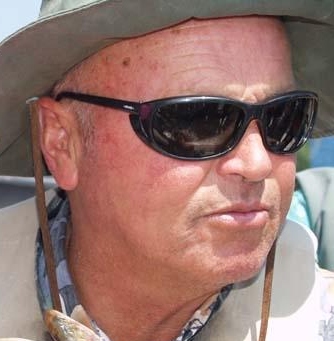Sea Nettles Never Leave, Message From the Cap’n

Message from the Cap’n is a compilation of fishing advice, waterman and weather insights, Chesapeake lore, and ordinary malarkey from the folks who keep their feet wet in the Potomac and St. Mary’s rivers.
Sea nettles — also known as jellyfish — are in the Chesapeake Bay year-round. They encase themselves by rolling up in a ball and then lay dormant on the bottom of the bay during the winter. During the spring they break apart when salinity and temperatures rise and grow to adults.
Water temperature and salinity provide a perfect storm of jellyfish this July. They will be with us until September so we will do most of our swimming in a pool on land. The old timers used to say that sea nettles purified the water, often leading to a bumper crop of oysters in future years.
Jellyfish do not digest oyster larvae, they pass the larvae through their system unharmed. Helping oysters even more, they do eat Comb Jellies that prey on oyster larvae.
“Comb jellies are transparent, jelly-like invertebrates with bright, iridescent color bands. They live near the water’s surface in the middle and lower Chesapeake Bay,” explains the Chesapeake Bay Program.
Summertime remedies for dealing with sea-nettle stings, according to Bay Weekly, include rubbing with sand, meat tenderizer, and urine. And rinsing with fresh water.
When fishing crab pots, watermen take a small can of evaporated milk along. If a sea-nettle stinger gets flipped into an eye, the milk will neutralize the sting.
Needless to say, crabs will not live long after the water gets hot and peppered with jellyfish.
As to dealing with the delectable hard crab this time of year, it is best to cook them as soon as possible. To keep them refreshed keep them in a cool spot with a wet rag covering them. If you put them in a refrigerated box, keep the air off them.
Male crabs migrate up the headwaters this time of year seeking fresher water. Females tolerate saltier water and remain in the lower to mid bay. As the water cools in the fall the males migrate back from the headwaters and keep moving south until the water temp get to the low 50s F. Then they bury in the mud to overwinter. They will awakened again next spring when the water temperature crosses that magic threshold of 50 degrees F again.
REMEMBER: PUT A CAN OF CONDENSED MILK IN THE BOAT WITH YOU WHEN YOU CRAB.
Sad to say, the Interpretive Buoy System remains offline. But water temp last week at “Gooses Reef” (mouth of Choptank River) was 86 degrees F and salinity is 12.1 PSU.
Till next time: “Be smart and stay safe.”
Enjoy the Season,
Cap’n Jack
Remember, “It’s Our Bay, Let’s Pass It On.”
To learn about tours and trips into the Chesapeake, keep in touch with Fins + Claws on Facebook. Catch up on Messages from the Cap’n Member Page. Please visit Cap’n Jack’s lore and share with your social media sites. Reach Cap’n Jack at: [email protected] or 240-434-1385.






















